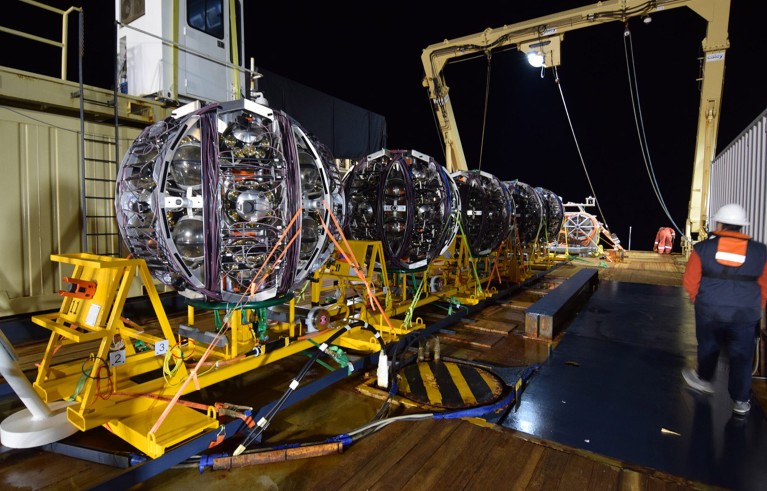- Courses
- GS Full Course 1 Year
- GS Full Course 2 Year
- GS Full Course 3 Year
- GS Full Course Till Selection
- Answer Alpha: Mains 2025 Mentorship
- MEP (Mains Enrichment Programme) Data, Facts
- Essay Target – 150+ Marks
- Online Program
- GS Recorded Course
- Polity
- Geography
- Economy
- Ancient, Medieval and Art & Culture AMAC
- Modern India, Post Independence & World History
- Environment
- Governance
- Science & Technology
- International Relations and Internal Security
- Disaster Management
- Ethics
- NCERT Current Affairs
- Indian Society and Social Issue
- NCERT- Science and Technology
- NCERT - Geography
- NCERT - Ancient History
- NCERT- World History
- NCERT Modern History
- CSAT
- 5 LAYERED ARJUNA Mentorship
- Public Administration Optional
- ABOUT US
- OUR TOPPERS
- TEST SERIES
- FREE STUDY MATERIAL
- VIDEOS
- CONTACT US
Awareness in the field of robotics
Awareness in the field of robotics
15-03-2023

Awareness in the field of robotics
- Robotics is a field of engineering and science that involves the design, construction, operation, and use of robots. A robot is an automated machine that can carry out tasks or perform operations without human intervention. Robotics combines various disciplines such as mechanical engineering, electrical engineering, computer science, and mathematics to create machines that can perform tasks autonomously.
- Robots come in different forms and shapes, from humanoid robots that resemble humans to industrial robots that are designed for manufacturing purposes. They can be programmed to perform a wide range of tasks, including assembly, welding, painting, packaging, and inspection. In recent years, robotics has expanded beyond manufacturing to include fields such as medicine, agriculture, space exploration, and military applications.
- One of the most significant advances in robotics in recent years is the development of machine learning and artificial intelligence algorithms. These technologies allow robots to learn from their environment and adapt their behavior accordingly. This has led to the creation of robots that can perform complex tasks, such as autonomous driving, without human intervention.
Robotics in India
- The robotics industry in India is projected to grow at a compound annual growth rate (CAGR) of over 20% between 2020 and 2025, according to a report by ResearchAndMarkets.com.
- With a global market share of around 15%, India is an emerging prospective market for the industrial robotics sector. A wide range of robotics activities can be possible with appropriate stimulation and investment in the fundamental underlying technologies. The discovery of first-wave innovations that will drive early markets is critical to this.
- As per the study of the International Federation of Robotics (IFR), India is on the top 15 list of the highest number of recorded robot installations in 2020 with 3200 robots deployed but it is way far from the competitors like China (~1,70,000) and South Korea (~31000).
Application of Robotics
- The manufacturing sector is one of the key areas of robotics adoption in India, with industrial robots being used for tasks such as welding, painting, and assembly. According to a report by the International Federation of Robotics, India had around 5,200 industrial robots installed in 2019.
- Healthcare is another area where robotics is gaining traction in India. Several Indian startups are developing robots for tasks such as surgical assistance, patient care, and rehabilitation. For example, Bengaluru-based startup Perfint Healthcare has developed a robotic-assisted system for minimally invasive cancer treatments.
- In the agriculture sector, robotics technology is being used for tasks such as crop monitoring, irrigation, and harvesting. For example, Mumbai-based startup Fasal has developed an AI-powered smart farming system that uses sensors and cameras to monitor crops and provide farmers with real-time insights.
- Indian educational institutions are also investing in robotics education and research. The Indian Institute of Technology (IIT) Delhi has set up a Robotics Research and Innovation Centre, while IIT Bombay has launched a Robotics Club that aims to promote robotics education among students.
- Indian startups are also making their mark in the global robotics industry. For example, GreyOrange, a robotics and automation company founded in India, has expanded to several countries and has deployed over 10,000 robots in warehouses around the world.
- Most activities in industries are regarded as dull, unclean, and hazardous for humans; hence, integrating robotics and automation in these areas will increase productivity, safety, and the quality of the finished product.
- To increase production, robots are necessary everywhere. Robotic technology is widely used in the automation business. The quality of products and processes improves significantly when such technology is used. Robotic technologies are widely used in industries such as automotive, atomic energy, defense, space, metals, textiles, and manufacturing.
- Robots are also being employed to improve the quality of life in operating rooms and rehabilitation centers. Robots have been used in developed countries such as Japan and America to clean rooms, amuse, and so forth. Robotics has created several opportunities for both companies and students.
Challenges regarding robotics development in India
- Robotics has created several opportunities, yet there are also numerous problems that this area confronts in India. In India, a world-class product in the robotics business with deep specialization in server engineering, electrical, embedded programming, and mechanical engineering is required (with a focus on design, manufacturing, and materials).
- Industrial robots are a crucial component of India’s modern industrial industry. A pillar of developing Indian riches would not be achievable without the usage of robotics technology or cost-effective production. Furthermore, robot-based production enhances product quality, working environment, and resource use.
- Job loss: One of the major concerns with automation is the loss of jobs. Many low-skilled workers in India are at risk of losing their jobs to machines and robots, which can work more efficiently and effectively than humans in some areas.
- High cost of implementation: Automation can be expensive to implement, particularly for small and medium-sized enterprises. This can be a major barrier to entry for many businesses, which may not be able to afford the cost of automation.
- Resistance to change: There is often resistance to change in India, particularly when it comes to adopting new technologies. This can slow down the adoption of automation and prevent businesses from realizing the benefits of automation.
Conclusion
- Many institutes and government science and technology agencies are funding and supporting efforts in IITs and other engineering colleges to work on robotics-related projects that would give a spark for homegrown entrepreneurs.
- Robotics and automation have the potential to transform the industrial landscape. It claims to produce the same results as computer systems have in services and other industries.
- However, many emerging countries, like India, have yet to fully embrace robots and automation. Given the gap and potential, companies are fast moving toward automation and its various benefits, putting a strong emphasis on robots as an intrinsic element of their innovation centers inside the industries themselves.
- They are spending a lot of money on robotics design and development technology. Thinklabs, robosoftsystems, iRobot, PARI robotics, and other companies are actively pursuing robotics invention, development, and implementation initiatives.
TO ACCESS ALL THE GENERAL STUDIES NOTES CLICK ON: https://ensureias.com/notes



